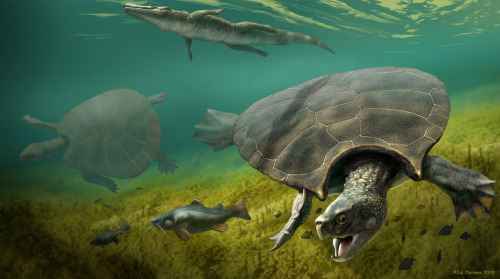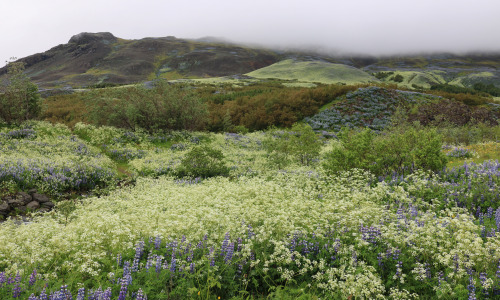Rocks-everywhere - Science, Plants, Cats, Music, And More


More Posts from Rocks-everywhere and Others



Paleontologists Find New Fossils of Gigantic Freshwater Turtle
http://www.sci-news.com/paleontology/stupendemys-geographicus-shells-08131.html

This mysterious hole nearly swallowed a 6-year-old boy
On the south shore of Lake Michigan there are a series of large sand dunes that create the Indiana Dunes National Lakeshore. The dunes are a consequence of winds blowing sand along the length of Lake Michigan and the lake level dropping over time and exposing the shorelines. The largest is known as Mount Baldy, a 40-meter high pile of sand that is not anchored by vegetation and migrates side to side every year depending on the winds.
In July 2013, a Northwestern Illinois family including 6-year-old Nathan Woessner was hiking along the dune on vacation. Suddenly, Nathan vanished and all that was left was this hole. Adults reached in and couldn’t feel the boy or reach his hands.
Keep reading
Forecasting the Weather 2: Clouds
Hello lighthouse keepers, sailors, fishermen, and even pirates! I recently made a post about predicting the weather while at sea. I mentioned in the post that clouds can also help predict the weather, but didn’t include them for brevity, but I did say I’d make that post another day. Well, today is that day! Consider this your guide for using clouds to anticipate the storms before they happen. (Pictures correlate with the word above them)
Fair Weather Clouds
Cirrus (see-ruhs) clouds are thin and wispy due to the wind blowing them around the sky. They look like this:

Cirrocumulus (see-ruh-kyoo-myuh-luhs) clouds are thin, patchy, and generally rippled or poofy. They generally come out in the winter. They look like this:

Altocumulus (al-tow-kyoo-myuh-luhs) clouds are rippled, fluffy and layered, the layers ranging from white to greyish. They look like this:

Cumulus (kyoo-myuh-luhs) clouds are what you think of when you think of clouds. They’re big, puffy, and come in lots of different shapes.

Stratus (stra-tus) clouds are thin and sheet-like, and always white and will generally cover most if not all of the sky.

Stratocumulus (stra-tow-kyoo-myuh-luhs) congregate in honeycomb-esque shapes, and they are patchy white or gray in color. Though these are fair weather clouds, they can indicate a storm is on its way.

Rain Clouds
Cirrostratus (see-row-stra-tuhs, sur-row-stra-tuhs) clouds also cover the sky, and can cause the halo-ing effect that was mentioned in part 1 of this post. Rain is probable within the next day.

Altostratus (al-tow-stra-tuhs) clouds are grey, cover the sky, and mean continuous rain.

Nimbostratus (nim-bow-stra-tuhs) clouds are big, puffy, gray, and thick. They’re often so thick they can obscure the sun. These also indicate continuous rain.

Cumulonimbus (Kyoo-myu-low-nim-bus) clouds are high, towered, puffy and white. They indicate upcoming thunderstorms and are generally accompanied by other cumulus clouds.

Sorry for such a long post but the pictures were necessary! Hope this second part is a good supplement to part one! Have fun keeping your eyes on the skys!

This radiant Sodalite mineral rock. Tenebrescence is the ability of minerals to change colour when exposed to light.
Source
this video is like every facet of what it is to be a cat, all at once
Fun fact: the guys at our college’s geology department prop out the doors with their samples. I totally understand why but as someone whose work with samples is necessarily super delicate and sterile it fucks me up so bad
-
 dragonsuntoendings reblogged this · 3 months ago
dragonsuntoendings reblogged this · 3 months ago -
 whowrestleswithgod liked this · 3 months ago
whowrestleswithgod liked this · 3 months ago -
 thegildedacorn liked this · 1 year ago
thegildedacorn liked this · 1 year ago -
 minniedeer liked this · 2 years ago
minniedeer liked this · 2 years ago -
 octoberwhore reblogged this · 3 years ago
octoberwhore reblogged this · 3 years ago -
 taiyuling liked this · 3 years ago
taiyuling liked this · 3 years ago -
 redactedmf reblogged this · 3 years ago
redactedmf reblogged this · 3 years ago -
 animallover81 liked this · 4 years ago
animallover81 liked this · 4 years ago -
 aconfusedwriter reblogged this · 4 years ago
aconfusedwriter reblogged this · 4 years ago -
 odd-shaman liked this · 4 years ago
odd-shaman liked this · 4 years ago -
 valuedabovehoardedgold reblogged this · 4 years ago
valuedabovehoardedgold reblogged this · 4 years ago -
 deamon1 liked this · 4 years ago
deamon1 liked this · 4 years ago -
 326-3rr0r liked this · 4 years ago
326-3rr0r liked this · 4 years ago -
 chaotic-trash-cat liked this · 4 years ago
chaotic-trash-cat liked this · 4 years ago -
 acahope311 reblogged this · 4 years ago
acahope311 reblogged this · 4 years ago -
 acahope311 liked this · 4 years ago
acahope311 liked this · 4 years ago -
 valuedabovehoardedgold liked this · 4 years ago
valuedabovehoardedgold liked this · 4 years ago -
 vislokawitch liked this · 4 years ago
vislokawitch liked this · 4 years ago -
 luciebaggins13 liked this · 4 years ago
luciebaggins13 liked this · 4 years ago -
 kilifiliandthorin reblogged this · 4 years ago
kilifiliandthorin reblogged this · 4 years ago -
 ilovedainironfoot liked this · 4 years ago
ilovedainironfoot liked this · 4 years ago -
 thorin-oakenshiield reblogged this · 4 years ago
thorin-oakenshiield reblogged this · 4 years ago -
 thatteacup reblogged this · 4 years ago
thatteacup reblogged this · 4 years ago -
 thatteacup liked this · 4 years ago
thatteacup liked this · 4 years ago -
 coloursofthemountain liked this · 4 years ago
coloursofthemountain liked this · 4 years ago -
 onlyjustanecho reblogged this · 4 years ago
onlyjustanecho reblogged this · 4 years ago -
 onlyjustanecho liked this · 4 years ago
onlyjustanecho liked this · 4 years ago -
 nonbinary-chaos-creature liked this · 4 years ago
nonbinary-chaos-creature liked this · 4 years ago -
 azrielever liked this · 4 years ago
azrielever liked this · 4 years ago -
 kuramirocket reblogged this · 4 years ago
kuramirocket reblogged this · 4 years ago -
 spacexbean liked this · 4 years ago
spacexbean liked this · 4 years ago -
 niamh-makes-an-entrance liked this · 4 years ago
niamh-makes-an-entrance liked this · 4 years ago -
 bubbly-snail liked this · 4 years ago
bubbly-snail liked this · 4 years ago -
 weirdness55460 liked this · 4 years ago
weirdness55460 liked this · 4 years ago -
 edmelon liked this · 4 years ago
edmelon liked this · 4 years ago -
 thetempleofthemasaigoddess reblogged this · 4 years ago
thetempleofthemasaigoddess reblogged this · 4 years ago -
 kilifiliandthorin reblogged this · 4 years ago
kilifiliandthorin reblogged this · 4 years ago -
 daenerysion reblogged this · 4 years ago
daenerysion reblogged this · 4 years ago -
 elizabeth-karenina reblogged this · 4 years ago
elizabeth-karenina reblogged this · 4 years ago -
 montanabohemian reblogged this · 4 years ago
montanabohemian reblogged this · 4 years ago -
 playingcardjoker reblogged this · 4 years ago
playingcardjoker reblogged this · 4 years ago -
 katethecolorful liked this · 4 years ago
katethecolorful liked this · 4 years ago -
 thayss-23 liked this · 4 years ago
thayss-23 liked this · 4 years ago -
 the-atlas-13 liked this · 4 years ago
the-atlas-13 liked this · 4 years ago -
 scimmymunkeh liked this · 4 years ago
scimmymunkeh liked this · 4 years ago -
 acelucky reblogged this · 4 years ago
acelucky reblogged this · 4 years ago -
 chronicallycab liked this · 4 years ago
chronicallycab liked this · 4 years ago -
 tolkienblackgirl reblogged this · 4 years ago
tolkienblackgirl reblogged this · 4 years ago -
 tolkienblackgirl liked this · 4 years ago
tolkienblackgirl liked this · 4 years ago
225 posts

